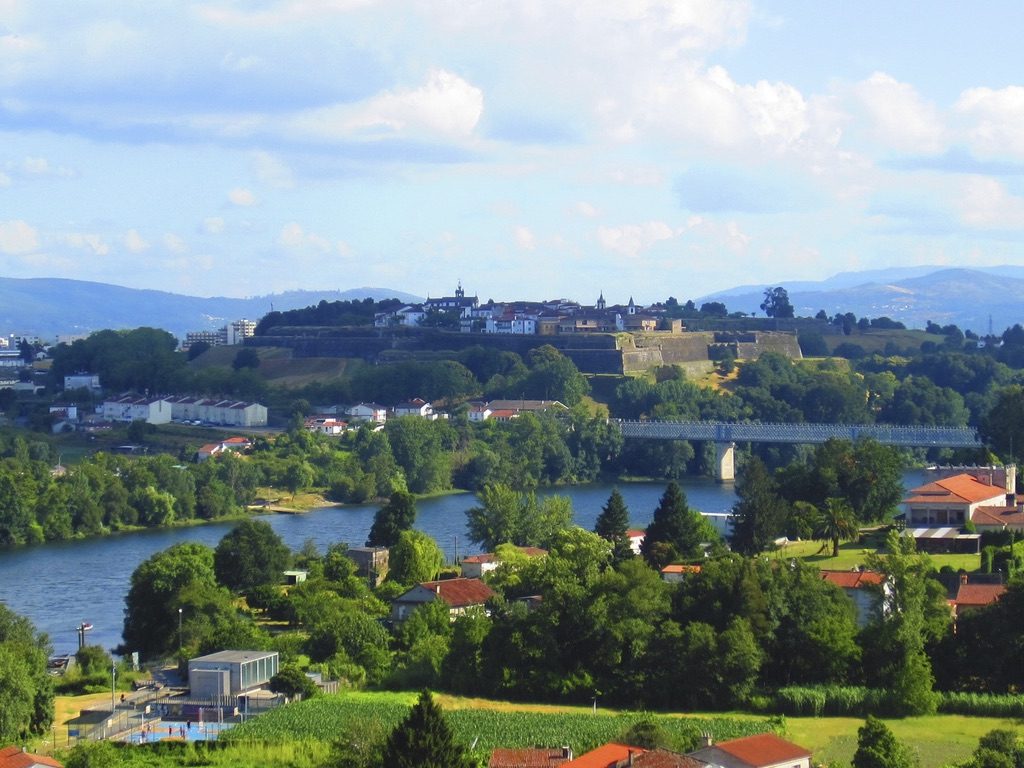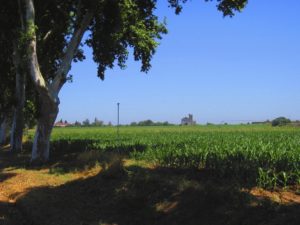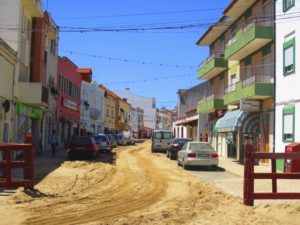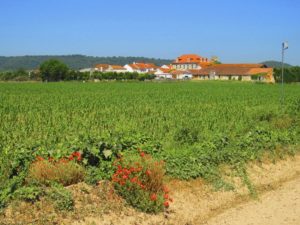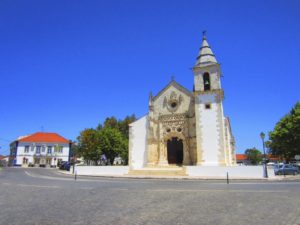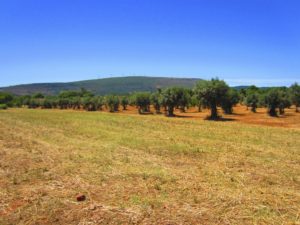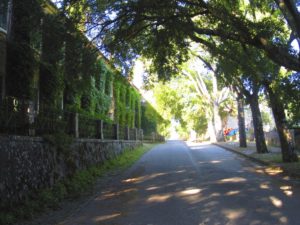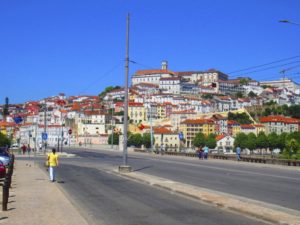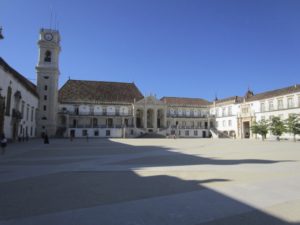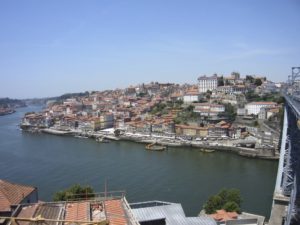CAMINHO PORTUGUESE
THE VIA LUSITANA
The Caminho Portuguese comes in two varieties, the pilgrim friendly stroll from Porto to Santiago, a pleasant 270 kilometre walk which can be done in about ten days, or the more demanding path from Lisbon, a journey of about 640 kilometres, which requires a little more than three weeks to complete, and the pilgrim possibly needs a slightly higher level of physical fitness – and insanity – as well. Although shorter than the Frances by about 160 kilometres, this Camino is a more isolated and demanding walk, with less pilgrims, fewer resources, and with significant portions on roads. That said, for those who decide to do the Portuguese it brings the pilgrim on a journey through enchanting towns, villages and landscapes that will leave a lasting impression.
Beginning at the Lisbon catherdral, the route passes through fairly gruff suburbs before moving on a more tranquil setting along the flood plains of the river Tagus. Over the next seven days it passes through some inviting little towns such as Santarem, Golega and the templar centre of Tomar, before reaching the city of Coimbra. The stages along these stretch are quite long, many of them in the region of 30 KM, and road walking is frequent as well. Places to load up on supplies are more limited than on other caminos, so it’s a good idea to take some extra provisions in case you run out. There are some albergues in these parts, but in their absence the local fire stations provide good hospitality. Long stretches with little shade are quite frequent, so be sure to wear a good hat to avoid the possibility of sunstroke.
Walking the Caminho Portuguese can often feel like wandering through a ghost land, as fellow pilgrims are often few and far between, and evidence of local life can also seem thin on the ground. The beautiful city of Coimbra is a delightful spot to reacquaint yourself with the rest of humanity. Its narrow cobbled streets, impressive array of churches, and world famous university make it an especially appealing feature of this walk. As the road gets nearer to Porto the walk passes through routine suburbs and grim industrial estates, but this city’s unique charms make it a fitting reward for the slog getting there.
Northern Portugal is lush and green, in contrast to the sunburnt landscapes nearer Lisbon, and as the route passes beyond Porto and moves towards the Spanish border it adopts a very different character. The gorgeous stroll by the coast exiting Porto offers a wonderful tonic for the soul, and the increase in pilgrim numbers at this point provides for greater sociability after the fairly solitary walk from Lisbon. The ten day section between Porto and Santiago takes in beautiful towns like Barcelos, Ponte de Lima, and Pontevedra. Pilgrims will also traverse the Rio Minha, which divides the border towns of Valenca and Tui, as they cross into Spain for the final 120 KM of this path. The woodlands and farmlands of southern Galicia are an attractive backdrop to the latter stages of this walk to the holy city of Santiago de Compostela, which is the final destination for the tired and weary pilgrim.
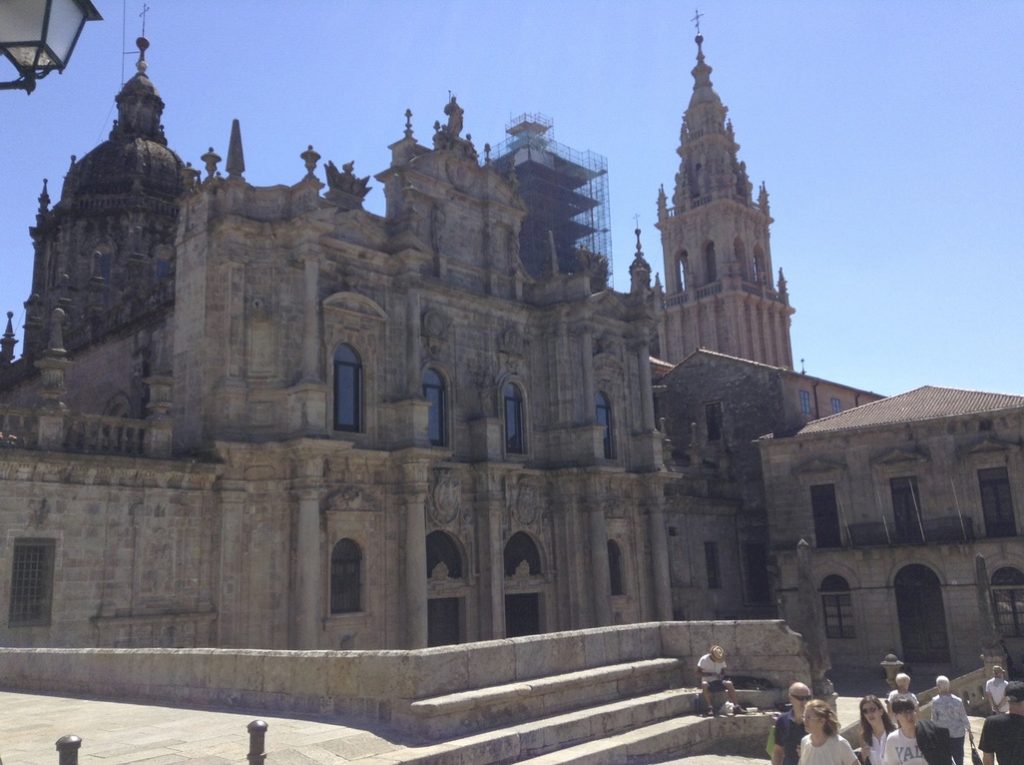
THE STAGES
It was in May and June of 2015 when I walked the Portuguese from Lisbon to Santiago. I was told it was unseasonably warm when I began this pilgrimage, and the temperature did reach into the 30s during the first few days, although it cooled down to more comfortable temperatures in the second week. I encountered few fellow walkers before Porto, so it was often quite a solitary and lonely walk. Albergues are in limited supply, although there are enough places for pilgrims to stay, and the local fire stations often provide refuge as well. I completed the tough section from Lisbon to Porto in 12 days, although some may opt to do it in 13 or 14 days. Porto to Santiago can be comfortably completed in 10 days. If anyone has questions about this Caminho please feel free to contact me.
The first day on the Portuguese doesn’t create the best of impressions. Walking out of Lisbon, through dreary suburbs and drab industrial lands, is hardly a good opening for a journey of spiritual and personal discovery, but such is life on the Way. Further on ahead we encounter more pleasant stretches along the Rio Tagus, and for a while the route passes through tranquil countryside, before another dreary section of road walking. A refreshing path along the wetlands of the river is a nice tonic towards the journey’s end. There was no albergue in Alverca in 2015, but there was a selection of private dwellings. Just be careful of the one you choose as I was overcharged in mine.
Another drab start to the day passing through industrial lands, although you begin to encounter more of Portugal’s appealing villages with their whitewashed buildings and cobble stone streets (which not always the most pleasant to walk on). There’s a lot of walking by train tracks, under electricity pylons and around a power station, and the last 6 KM to Azambuja is along the side of a busy road, where cars and trucks whizz past with just centimetres to spare. Azambuja is a nice little town, with a small albergue.
Today is a long walk, with little shelter, although it is a much quieter and more rural walk than the previous days. Today’s stage passes along the flood planes of the Rio Tegus, which are rich and fertile agricultural lands. There’s not many places to stock up along the way, so make sure you have enough water. It’s largely a flat walk, except for the uphill slog at the end to the lively small city of Santarem. This picturesque hillside town has a wide choice of accommodation types, restaurants and shops, and has a lovely old town with a long history stretching back to Roman times.
Another long walk along the flood plains of the Rio Tegus. Like the previous day, a walk that offers little shade, but despite its length it is largely flat. It is a quiet stage with few opportunities to pick up provisions, so again make sure you have enough food and water. These isolated stages provide good opportunities for reflection. Golega is a pretty little town with an albergue, while the local fire station also accommodates pilgrims.
A much more varied walk than yesterday’s, today’s path veers away from the river and into more hilly and wooded territory. Passing by the epic manor house, Quinta de Cardiga, much of it abandoned, is one of the highlights of today’s walk. There are some stretches on busy roads and near railway tracks, but many others on quieter rural roads and forrest pathways. The delightful town of Tomar is one of the prime attractions of this Caminho, with its Templar castle overlooking the town and accompanying Convento de Christo being an unmissable sight.
A quiet country walk today, again with few places to get basic provisions such as water. Rural roads and woodland paths make up significant portions of today’s route. It is quite a serene stage, but pay close attention to signage, especially in the woods, as it can be easy to get lost and you could end up walking an additional 5 or 6 KM. The private albergue in Alvaiazere is run by Carlos, who provides great hospitality to all travellers.
While passing through this portion of Portugal you might be forgiven for thinking nobody lives there. Today’s walk has long sections where you’re not likely to encounter another soul until you reach the town of Ansiao after about 15 KM. There’s a lot of forrest trails and country paths on this stage, and it is quite a pleasant walk. The village of Alvorge offers an alternative place to stay, but for those with energy it’s another 8 KM to Rabacal. A small private hotel offers affordable lodgings for the night.
Today’s path begins with quiet rural and forrest paths, but as we get nearer the city of Coimbra we have a lot more road walking to endure. Some sections run parallel to a busy motorway, and we can catch glimpses of old Roman ruins en route. The city of Coimbra, whose old town is an UNESCO World Heritage Site, is packed full of historical buildings, including a cathedral and a magnificent university. The albergue is located in a very impressive convent, which you’ll encounter on the way into the city.
The route out of Coimbra is relatively painless, and the next section meanders from village to village, much of it along roads, with a few wooded sections interspersed. Many choose to stay in Mealhada, after about 22.5 KM. Even if you don’t stay there it’s a good place to stock up on supplies. I opted to go a further 8 KM to the town of Anadia, which is located about 1 KM away from the main Caminho. There’s an albergue in a convent at the far side of this town, which is only a short walk back to the main path.
I conflated what are normally three stages from Coimbra to Albergaria A-Velha into two due to time constraints. As a consequence, today’s stage is a particularly long and arduous one. The conventional path runs from Mealhada to Agueda, which is a fairly drab section, largely on asphalt, with a mixture of rural and urban settings. From Agueda, there’s a lot of tiring road walking again. Keep an eye out the once magnificent but now run down mansions in the village of Mourisca do Vouga, while a eucalyptus forrest later in the day is a refreshing antidote to the many hours of road walking. There is a nice modern albergue in the pleasant town of Albergaria A-Velha.
A lot of tough road walking today, although there are a number of pleasant villages along the way. Sao Joao is an unimpressive modern industrial town, which offers few hints that it is part of a historic pilgrim trail. There was no albergue here as of 2015, with the Bombieros offering the only affordable accommodation for pilgrims.
Today is one of the longest and most demanding stages, with a lot of road walking, and much of it through boring suburbs and dull industrial areas. However, the mesmerising city of Porto is the reward at the journey’s end. While there was no private albergue in this city as of 2015, there are plenty of hostels, pensions and hotels offering accommodation in all price ranges. The journey from Lisbon to Porto is quite arduous, so Porto is a good place to spend an extra night both to recover from the trek and explore the cities many charms, historic buildings and riverside cafes.
Today is the beginning of a whole new journey. Many people join this path at Porto, so you’ll encounter a lot more pilgrims from this point onwards. There are several routes out of this city. By far the most beautiful is the coastal path. Simply follow the river to Matosinhos and then continue along the wild Atlantic way. The ocean views are a wonderful tonic following days of city walking, and the town of Vila do Conde is a pleasant destination with a good selection of shops, restaurants and accommodation.
The path heads back inland today, and there’s a lot of road walking to endure, but there are many pleasant stretches in the verdant countryside and through quiet eucalyptus forests, especially if you take the alternative path up Monte Franquiera. Barcelos is a pleasant town with a municipal albergue and all other modern conveniences. Its central square is a lively spot, especially if you’re there on market day.
Yet another 30 KM plus stage, but a very pretty one, and to a lovely destination. Today’s path wanders through quiet villages, country lanes, woodlands and vinyards, and the destination town of Ponte de Lima looks like it came out of a book of fairy tales. There’s a fine albergue here (which in 2015 didn’t open until 4pm), and there are plenty of curious sights to see in this town while you’re waiting for it to open.
Today is the shortest day so far by a country mile, and it is for the most part a very agreeable rural walk. That said, there is a very challenging climb of approximately 250 metres Alto de Portela Grande towards the journey’s end. There is an albergue in Rubiaes in a converted old school house, and there are shops and restaurants a short walk from there.
Pleasant rural walking is the order of the first portion of the day, but gradually this becomes more urban as we approach the fortified border town of Valenca. It’s worth lingering a little bit in this town and exploring the narrow streets of the old walled town. Then it’s time to cross the old bridge over the Rio Minho and walk into Spain. Tui, the town on the Spanish side, has an impressive old cathedral, which sometimes hosts the famous botafumeiro from Santiago’s cathedral. Don’t forget to put your watch forward by one hour once you cross the border.
The first full day’s walking in Spain and it’s back to the 30 KM plus stages today. Most of it is pleasant country walking, although a long stretch through the industrial town of Porrino is a bit drab. It’s a fairly flat walk for the first 20 KM, but there’s a significant ascent and descent for the last 10 KM. Today is also the point where we reach the 100 KM distance to Santiago, so it is the last day for people to join this camino if they way to be eligible for a compostela. Redondela is a good town with a nice albergue.
Today’s walk is another short one, with two climbs and descents of about 150 metres each. Glimpses of the city of Vigo can be seen at the start of the day. Much of the walking is through quiet woodlands and alongside a river, so it’s good for the senses. Pontevedra is a beautiful city, with several impressive churches and convents that are well worth visiting, although the albergue is about 1.5 KM on the near side of town, so you’ll have to do a bit more walking if you want to explore this place.
Another relatively short stage, with just one climb of about 135 metres. It’s a fairly pleasant walk for the most part, taking you into the heart of the Galician countryside. Caldas de Reis is an amiable country town, famous for its thermal healing waters. It has a municipal albergue and plenty of shops to pick up supplies.
The penultimate stage, and the road signs pointing to Santiago now display tantalisingly low distances. It’s a quiet country walk until you reach the town of Pontecesures, and from there it’s a short stroll on to Padron, where many people choose to spend their last night. Padron is certainly worth exploring, as legend claims this was the place in Spain where Saint James first came ashore. There’s a nearby detour to Monte Santiaguino, where it is claimed Saint James first preached the gospel. This tranquil spot involves an uphill hike, but the isolated mountain meadow on top is worth the journey. Padron has an albergue, but if you still have enough energy, and want to have a shorter journey the next day into Santiago, then consider walking a further 9 KM to Teo, where there is another quiet albergue closer to your final destination.
The big day has finally arrived, and the last stage to Santiago is a relatively short and painless one. There are pleasant stretches of rural walking for the first few kilometres until you reach the outer suburbs of Santiago. The Portuguese Caminho has its own path directly into the city, so you’re not likely to encounter the thousands of other pilgrims until you finally reach the epic Praza de Obradoiro in front of the cathedral. Be sure to attend the high mass to witness the swinging of the Botafumeiro, and call to the Pilgrim’s Office to collect your Compostela. Congratulations on completing this journey.
